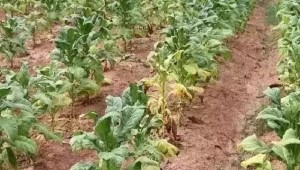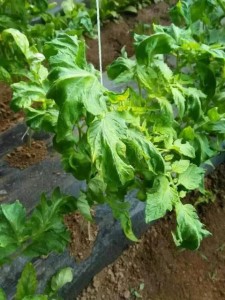1. Long drought watering
If the soil is too dry in the early stage, and the amount of water is suddenly too large in the later stage, the transpiration of the crop leaves will be seriously inhibited, and the leaves will roll back when they show a state of self-protection, and the leaves will roll down.
2. The effect of low temperature freezing damage
When the temperature is continuously below 10°C, the mesophyll cells of the crops will suffer from cold damage, and the leaves will begin to wilt. When the spring is cold, it will also cause the new shoot leaves to curl down!
3. Improper use of hormones
When the concentration of naphthalene acetic acid is too high, the leaves will show the phenomenon of rolling back after spraying. When 2,4-D is dipped in the flowers, the concentration is too large or sprinkled on the leaves, making the leaves thick, shrinking or curling downwards.
4. Pest damage
The yellow mites are so small that they are usually difficult to identify with the naked eye. The main symptoms of plant damage by mites are narrowing, stiff and upright leaves, shrinking downwards or twisting deformities, and finally bald tips. The leaves will become smaller, harder and thicker, and the most important thing is the oily stain on the back of the leaves, with a tea rust color. Aphid damage can also cause severe leaf curling, because aphids generally feed on the back of leaves and young tissues, so aphid damage can also cause leaf curling to varying degrees.
5. Nematode damage
The infection of nematodes can cause the roots to not absorb nutrients and transmit them, causing serious lesions on the roots, causing the leaves to turn downwards.
Post time: Nov-22-2022









